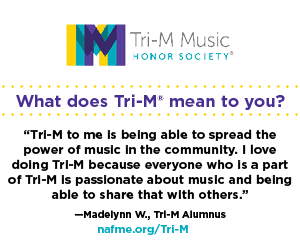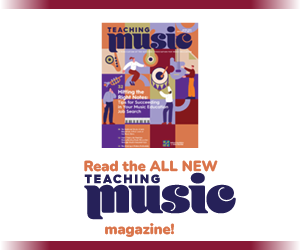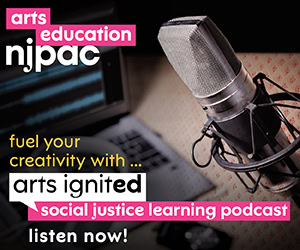NAfME BLOG
Rethinking Practices to Better Aid English (as a New Language) Learners in the Elementary General Music Classroom
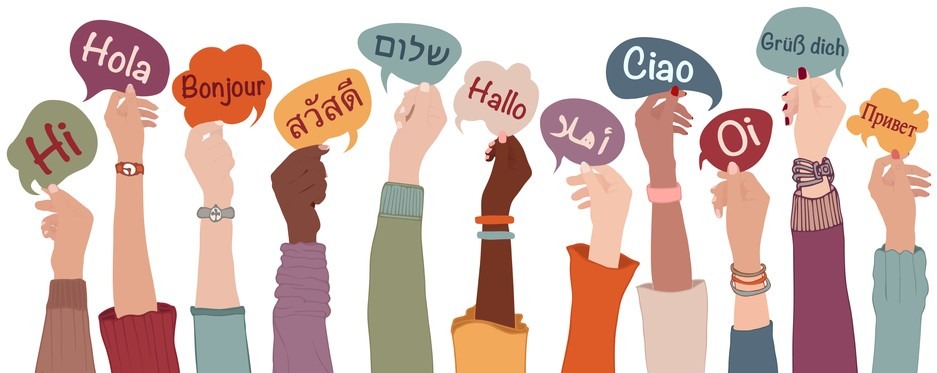
/ News Posts / Rethinking Practices to Better Aid English (as a New Language) Learners in the Elementary General Music Classroom
Rethinking Practices to Better Aid English (as a New Language) Learners in the Elementary General Music Classroom
By NAfME Member Dr. Abby Gail Means
Presenting Rethinking Practices to Better Aid English (as a New Language) Learners in the Elementary General Music Classroom at the “NAfME is ME!” 2022 NAfME National Conference in National Harbor, Maryland.
As the United States population continues to grow in cultural and linguistic diversity, elementary general music teachers (EGMTs) who teach diverse populations of students struggle with creating meaningful music-making and social experiences for students whose language practices vary from their own.
As music educators, we welcome and invite diversity into our classrooms! But most EGMTs have not received any formal instruction or professional development on how to better aid students from diverse backgrounds with varying language practices. Pedagogical practices directly related to linguistically diverse students is an area that has been greatly overlooked in university music education programs (Culp & Salvador, 2021), practitioner publications, research publications, and professional development opportunities (West, 2020).
The Facts
Student Facts
- 10.4% of the students in public PreK–12 schools in the United States are labeled “English Learners” (EL) (National Center for Education Statistics, 2022)
- Of this 10.4%, almost 60% are in grades K-3 (see illustration above)
Music Teacher Facts
- 95.17% of music teachers in the U.S. reported that English is their “first and only language” (Elpus, 2015, p. 321)
- 4.83% of music educators are bi/multilingual (Elpus, 2015)
Restate and Reflect
Let’s state that again . . . the majority of students learning English as a new language in the U.S. are being taught by a music teacher population that is 95.17% monolingual, speaking only English. Unlike elementary grade-level teachers who facilitate one classroom of students, elementary music teachers are responsible for facilitating learning across the entire school population. In essence, EGMTs are responsible for creating and facilitating social and music-making experiences for the largest percentage of English as a New Language (ENL) students in public schools.
Question???
How can an overwhelmingly English-speaking population of elementary general music teachers successfully and equitably facilitate music-making experiences for students when they do not share a common spoken language?
Answer???
Is there just one definitive answer to this question? Are there multiple answers to this question? Are any of the answers reputable and applicable for multiple groups of students? In reality, there are probably a thousand answers to the question above. In an effort to encourage curiosity and gradual change, I propose that purpose is one important key that should be hiding behind the strategies and practices that are being used by EGMTs who facilitate students with varying language practices.
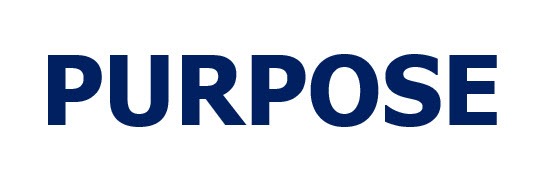 Providing instructional strategies for diverse populations is a crucial element in elementary general music classrooms. However, there are classroom strategies that music teachers are already using on a daily basis that can be re-examined and implemented with purpose, intent and focus to better facilitate this population of students. This session will explore a few of these strategies from both a research-based and practical approach, using small group creativity and collaboration to provide participants one way to begin looking at, planning for, and implementing instruction for students learning English as a new language.
Providing instructional strategies for diverse populations is a crucial element in elementary general music classrooms. However, there are classroom strategies that music teachers are already using on a daily basis that can be re-examined and implemented with purpose, intent and focus to better facilitate this population of students. This session will explore a few of these strategies from both a research-based and practical approach, using small group creativity and collaboration to provide participants one way to begin looking at, planning for, and implementing instruction for students learning English as a new language.
References
Cioè-Peña. M. (2017). Bilingualism, disability and what it means to be normal. Journal of Bilingual Education Research & Instruction, 19(1), pp. 138-160.
Culp, M. E., & Salvador, K. (2021). Music teacher education program practices: Preparing 159 teachers to work with diverse learners. Journal of Music Teacher Education, 30(2), 51-64. DOI: 10.1177/1057083720984365
Elpus, K. (2015). Music teacher licensure candidates in the United States: A demographic profile and analysis of licensure examination scores. Journal of Research in Music Education, 63(3), 314-335. DOI: 10.1177/0022429415602470
National Center for Education Statistics. (2022). English Language Learners in Public Schools.
West, J. J. (2020). Is music teacher professional development becoming more effective? Evaluating practice and policy in the United States, 1993-2012. Journal of Research in Music Education, 69(3), 1-22.
About the author:
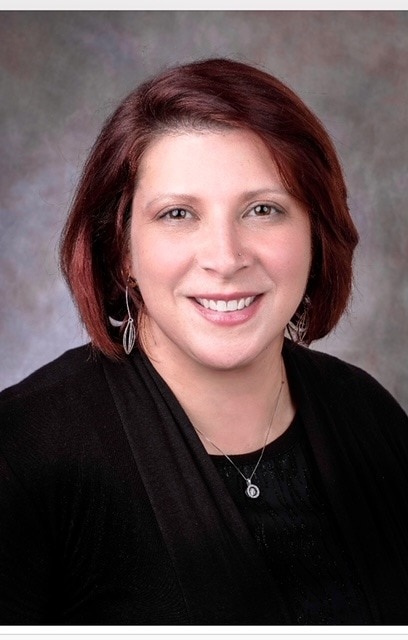 Abby Means is currently an Assistant Professor of Music at DePauw University, teaching courses in general music education and serving as university supervisor for music education student teachers. She also serves as an adjunct professor at the University of Indianapolis, where she has taught Elementary General Music Methods for the past four years. Dr. Means has presented at state and national conferences on topics such as introducing ukulele to the general music classroom, collaboration during student teaching, collaboration for special music education, and practices to encourage equitable facilitation of students learning English as a new language. Her dissertation examined strategies and practices that elementary music educators are using in their classrooms to better facilitate emergent multilingual students. Dr. Means’ research interests include early childhood and elementary music education, special music education, and best practices for facilitating linguistically diverse students in the elementary general music classroom.
Abby Means is currently an Assistant Professor of Music at DePauw University, teaching courses in general music education and serving as university supervisor for music education student teachers. She also serves as an adjunct professor at the University of Indianapolis, where she has taught Elementary General Music Methods for the past four years. Dr. Means has presented at state and national conferences on topics such as introducing ukulele to the general music classroom, collaboration during student teaching, collaboration for special music education, and practices to encourage equitable facilitation of students learning English as a new language. Her dissertation examined strategies and practices that elementary music educators are using in their classrooms to better facilitate emergent multilingual students. Dr. Means’ research interests include early childhood and elementary music education, special music education, and best practices for facilitating linguistically diverse students in the elementary general music classroom.
Did this blog spur new ideas for your music program? Share them on Amplify! Interested in reprinting this article? Please review the reprint guidelines.
The National Association for Music Education (NAfME) provides a number of forums for the sharing of information and opinion, including blogs and postings on our website, articles and columns in our magazines and journals, and postings to our Amplify member portal. Unless specifically noted, the views expressed in these media do not necessarily represent the policy or views of the Association, its officers, or its employees.
November 3, 2022. © National Association for Music Education (NAfME.org)
Published Date
November 2, 2022
Category
- Culture
- Diversity, Equity, Inclusion, and Access (DEIA)
- Representation
Copyright
November 2, 2022. © National Association for Music Education (NAfME.org)



